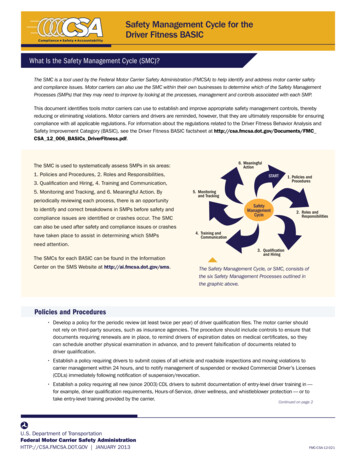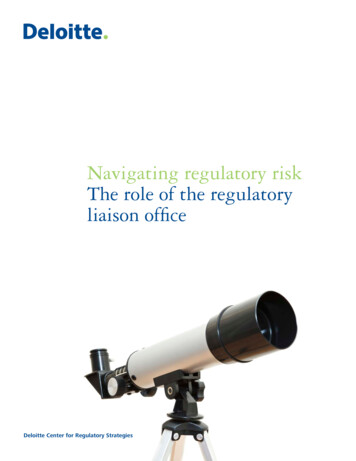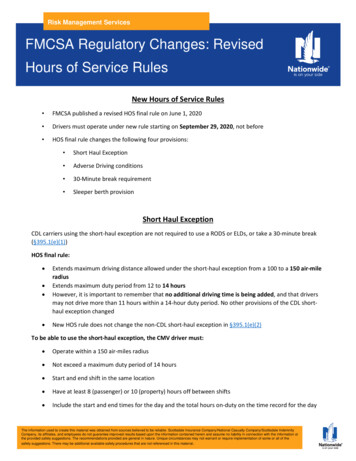
Transcription
Risk Management ServicesFMCSA Regulatory Changes: RevisedHours of Service RulesNew Hours of Service Rules FMCSA published a revised HOS final rule on June 1, 2020 Drivers must operate under new rule starting on September 29, 2020, not before HOS final rule changes the following four provisions: Short Haul Exception Adverse Driving conditions 30-Minute break requirement Sleeper berth provisionShort Haul ExceptionCDL carriers using the short-haul exception are not required to use a RODS or ELDs, or take a 30-minute break(§395.1(e)(1))HOS final rule: Extends maximum driving distance allowed under the short-haul exception from a 100 to a 150 air-mileradiusExtends maximum duty period from 12 to 14 hoursHowever, it is important to remember that no additional driving time is being added, and that driversmay not drive more than 11 hours within a 14-hour duty period. No other provisions of the CDL shorthaul exception changed New HOS rule does not change the non-CDL short-haul exception in §395.1(e)(2)To be able to use the short-haul exception, the CMV driver must: Operate within a 150 air-miles radius Not exceed a maximum duty period of 14 hours Start and end shift in the same location Have at least 8 (passenger) or 10 (property) hours off between shifts Include the start and end times for the day and the total hours on-duty on the time record for the dayThe information used to create this material was obtained from sources believed to be reliable. Scottsdale Insurance Company/National Casualty Company/Scottsdale IndemnityCompany, its affiliates, and employees do not guarantee improved results based upon the information contained herein and assume no liability in connection with the information orthe provided safety suggestions. The recommendations provided are general in nature. Unique circumstances may not warrant or require implementation of some or all of thesafety suggestions. There may be additional available safety procedures that are not referenced in this material.
While operating under the short-haul exception, drivers are not required to fill out a log with a graph grid or usean Electronic Logging Device (ELD), they can use a time record instead Motor carrier must record the driver’s time in, time out, and total number of hours per day Time must include the total time for the 7 preceding days Records must be maintained for 6 months When a driver no longer meets the exception (drives too far/works too many hours), the drivermust complete a regular log or use an ELD for the day (§395.8) If driver is required to complete a log: 8 or fewer days within the last 30 days driver can use paper log with a graph grid More than 8 days within the last 30 days driver must use an ELD to record time forthat dayExample: Under the previous rule, a driver based in Peoria could not service Chicago and St. Louis. Thenew rule allows the driver to service those two cities, as well as an additional 2 hours to do soThe information used to create this material was obtained from sources believed to be reliable. Scottsdale Insurance Company/National Casualty Company/Scottsdale IndemnityCompany, its affiliates, and employees do not guarantee improved results based upon the information contained herein and assume no liability in connection with the information orthe provided safety suggestions. The recommendations provided are general in nature. Unique circumstances may not warrant or require implementation of some or all of thesafety suggestions. There may be additional available safety procedures that are not referenced in this material.
Adverse Driving Conditions DefinitionPrevious definition Adverse driving conditions means snow, sleet, fog, or other adverse weather conditions, a highwaycovered with snow or ice, or unusual road and traffic conditions, none of which were apparent based oninformation known to the person dispatching the run at the time it was begun.New definition Adverse driving conditions means snow, ice, sleet, fog, or other adverse weather conditions or unusualroad or traffic conditions that were not known, or could not reasonably be known, to: a driver immediately prior to beginning the duty day or immediately before beginning drivingafter a qualifying rest break or sleeper berth period, ora motor carrier immediately prior to dispatching the driverNote: The adverse driving conditions exception can only be applied if the condition was unforeseeableimmediately prior to driving or dispatch. Driving into poor weather that had been forecast on the routefor days or hours prior to driving would not be eligible; nor would encountering rush hour traffic in anarea, or at a time, when this is the norm.Under the previous rule, drivers were granted an exception to the 10- or 11-hour driving limits whenunforeseeable adverse driving conditions affected their route.HOS final rule: Extends the duty day by 2 hours when adverse driving conditions are encountered–In addition to the 2 hours of driving time already allowed, and applies to both: Property carrier 14-hour driving window (§395.3(a)(2)) and Passenger carrier 15-hour on-duty limit (§395.5(a)(2)) Updates the adverse driving conditions definition to include the role of the driver Example: A driver is 15 miles from his destination when there is a gravel spill on the bridge ahead (thebridge is the only access to the destination)–Driver has 1 hour left of driving time and 1 hour left in the driving day–Driver can stop at the next exit (for up to 2 hours) until the road is clear, and still have time toget to the destination without violating HOS rulesDrivers should annotate, and include details about, the adverse driving condition in their log or ElectronicLogging Device (ELD)The information used to create this material was obtained from sources believed to be reliable. Scottsdale Insurance Company/National Casualty Company/Scottsdale IndemnityCompany, its affiliates, and employees do not guarantee improved results based upon the information contained herein and assume no liability in connection with the information orthe provided safety suggestions. The recommendations provided are general in nature. Unique circumstances may not warrant or require implementation of some or all of thesafety suggestions. There may be additional available safety procedures that are not referenced in this material.
30-Minute Break RequirementUnder the previous rule, property-carrying drivers were required to take a 30-minute break after 8 hours onduty §395.3(a)(3)(ii)HOS final rule: 30-minute break is required after driving for a total of 8 hours (driving time does not need tobe consecutive) without at least a 30-minute break30-minute break can also be satisfied by an “on-duty not driving period”Previous Rule30-minute break can be satisfiedby: Off-dutySleeper berthNEW Rule30-minute break can be satisfiedby: Off-dutySleeper berthOn-duty, not drivingNote: The flexibility provided with this change will allow normal breaks from driving (i.e., from “time on task” inthe research literature) to satisfy the requirement, provided the break lasts at least 30 consecutive minutes.For example, a driver could have 10 minutes of on-duty not driving, plus 10 minutes of sleeper berth time, plus10 minutes of off-duty time to satisfy his or her 30-minute break requirement, as long as these are consecutive.Short non-consecutive periods cannot be combined to reach 30 minutes of non-driving time.The examples on this slide assume the driver has driven for 8 hours and needs to take a 30-minute breakPrevious Rule:Previous rule can only be satisfiedeither in sleeper berth or off duty.Example shows 30 minutes off dutybetween 5AM-5:30AMThe information used to create this material was obtained from sources believed to be reliable. Scottsdale Insurance Company/National Casualty Company/Scottsdale IndemnityCompany, its affiliates, and employees do not guarantee improved results based upon the information contained herein and assume no liability in connection with the information orthe provided safety suggestions. The recommendations provided are general in nature. Unique circumstances may not warrant or require implementation of some or all of thesafety suggestions. There may be additional available safety procedures that are not referenced in this material.
New rule: On duty-not driving at 5AM to 5:30AMOn duty-not driving at 5AM to 5:30AMSleeper Berth ProvisionAllows drivers to split 10-hour off-duty period, as long as: One off-duty period (whether in or out of the sleeper berth) is at least 2 hours long, and The other involves at least 7 consecutive hours in the sleeper berthWhen used together, neither period counts against the 14-hour driving window 8-hour sleeper-berth period by itself can no longer be excluded from the 14-hour drivingwindowExample: The example on this slide assumes the driver starts day 1 having just completed 10 consecutivehours off-duty None of the 4 break periods count against the driver’s 14-hour windowRemember, you can split this time a myriad of different ways as long both periods togetherequal at least 10 hours, and each period meets the respective requirements.The information used to create this material was obtained from sources believed to be reliable. Scottsdale Insurance Company/National Casualty Company/Scottsdale IndemnityCompany, its affiliates, and employees do not guarantee improved results based upon the information contained herein and assume no liability in connection with the information orthe provided safety suggestions. The recommendations provided are general in nature. Unique circumstances may not warrant or require implementation of some or all of thesafety suggestions. There may be additional available safety procedures that are not referenced in this material.
Option 1, the driver used a 7/3 splitDriver first went off duty for 3 hours at 7AM till 10 AM . The driver goes back on-duty not driving from 10 AM toNoon and begins driving till 5 PM and logs 7 hours of sleeper berth time until midnight.Option 2, the driver is using an 8/2 splitDriver went off duty for 2 hours at 7AM until 9AM and goes on duty not driving from 9 AM to 10 AM. Driverthen drivers from 10 AM until 3 PM and then goes on duty not driving from 3 PM-4 PM. Driver then logs 8 hourssleeper berth from 4 PM to midnight.The information used to create this material was obtained from sources believed to be reliable. Scottsdale Insurance Company/National Casualty Company/Scottsdale IndemnityCompany, its affiliates, and employees do not guarantee improved results based upon the information contained herein and assume no liability in connection with the information orthe provided safety suggestions. The recommendations provided are general in nature. Unique circumstances may not warrant or require implementation of some or all of thesafety suggestions. There may be additional available safety procedures that are not referenced in this material.
Scottsdale Insurance Company/National Casualty Company/Scottsdale Indemnity Company, its affiliates, and employees do not guarantee improved results based upon the information contained herein and assume no liability in connection with the information or the provided safety suggestions. The recommendations provided are general in nature.
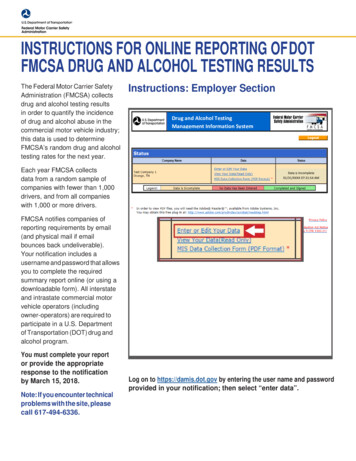

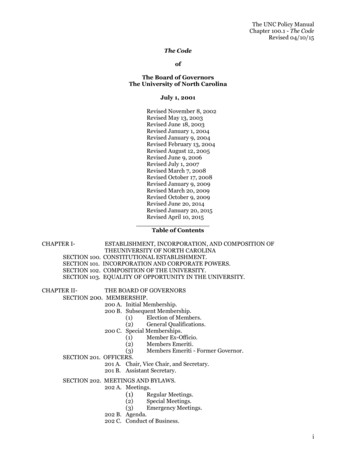
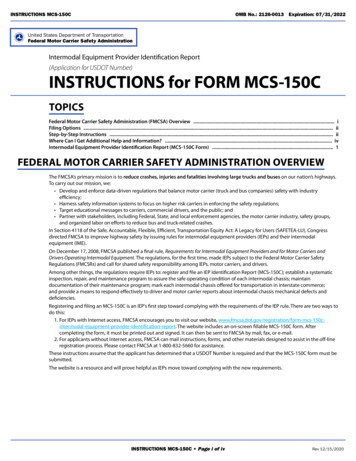
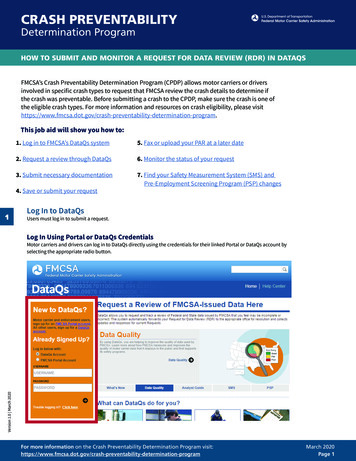
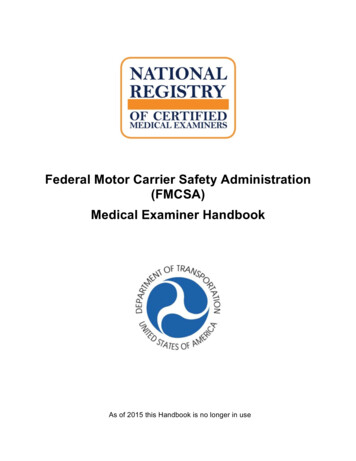
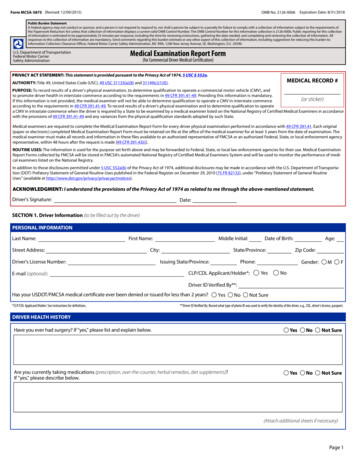
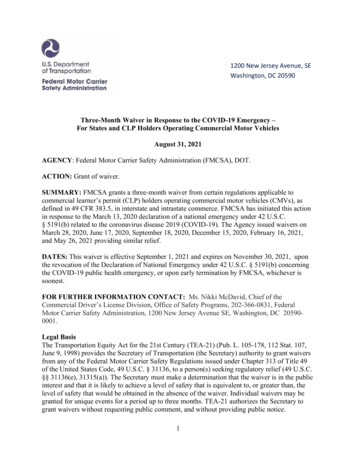
![DEPARTMENT OF TRANSPORTATION [4910-EX-P] Federal Motor Carrier Safety .](/img/57/unified-carrier-registration-plan-fees.jpg)
